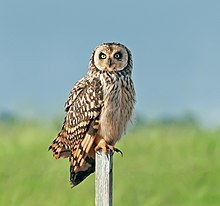Many people go to Puerto Vallarta for the "wild" life. It was the wildlife that attracted me. And I was not disappointed. I saw whales...humpbacks...many of them, close up. And dolphins jumping the waves behind our boat. But the most amazing wildlife adventure was my sea turtle experience. I was fortunate to be sitting on the beach as new hatchlings drew a crowd of interested tourists.
I watched as these creatures fought their way over the sand, leaving behind the distinctive tracks.
I would later see tracks all over the beaches of this area. These tracks were quite large, about 3 inches wide, but others were half the size.
Finally the hatchlings reached the ocean, surrounded by a large crowd of humans rooting for their survival. Some well meaning people were picking up the turtles and taking them to the ocean....clearly a violation of the posted regulations. But we all wanted to see these animals "make it".
I felt an inner joy as I saw the turtles, finally, after the long struggle in the sand, reach the ocean.
Here is where I thought the adventure would end. But I was wrong. Later I walked the beach and discovered information signs about the turtles--3 endangered species--that nest here.
I also saw the turtle sanctuary, right in front of big condos and time
shares.
The sanctuary digs up known turtle nests and relocates them--to
protect them from all the dangers of beach development and use.
These nest relocations are dated according to estimated hatch date, fenced and shaded to protect the eggs. It takes as little as 45 days between eye laying and hatching with some species of sea turtles.
Again, I thought this would be the end of our turtle adventure. But the next day, in almost the same place and about the same time, I was witness to another hatching. This time the hotel security and a turtle worker (and parasail vendor) were on the scene quickly.
I was there before the others arrived and noted a small (about 8 inch) conical depression in the sand, with several dark spots.
Soon a nose and mouth became visible.
As I watched the struggle to emerge from the under the sand, the turtle worker, security, and lots of tourists arrived.
The worker quickly dug around the nest releasing almost 130 hatchlings.
As he dug, he counted the animals and placed them in a tray. They were to be collected and released later that night--to avoid the daytime bird predators that might gobble them up on their long trek across the beach to the ocean.
Finally, at a depth of about 12-14 inches, the large leathery egg shell remains were visible.
After all the turtles were dug up, the egg shells were replaced and hole filled in. This hatch was headed for shelter until nightfall.
Human intervention has helped them to avoid some dangers, but many dangers remained.
As I watched the sun set that evening, I was hopeful that, even though the dangers were many, these ancient creatures will survive to come back to these beaches for many years to come and that more people would be fortunate enough to have a wildlife adventure like mine.
 When she visits our house, my favorite activity is to watch the birds with her. She can identify by sight all of the birds that come to our feeder. But she can combine what she has learned in the bird call books with what she sees at the feeder. She'll say, "That's a chick-a-dee-dee-dee", mimicking the sound the bird makes.
When she visits our house, my favorite activity is to watch the birds with her. She can identify by sight all of the birds that come to our feeder. But she can combine what she has learned in the bird call books with what she sees at the feeder. She'll say, "That's a chick-a-dee-dee-dee", mimicking the sound the bird makes.


 photo from Wikipedia
photo from Wikipedia












